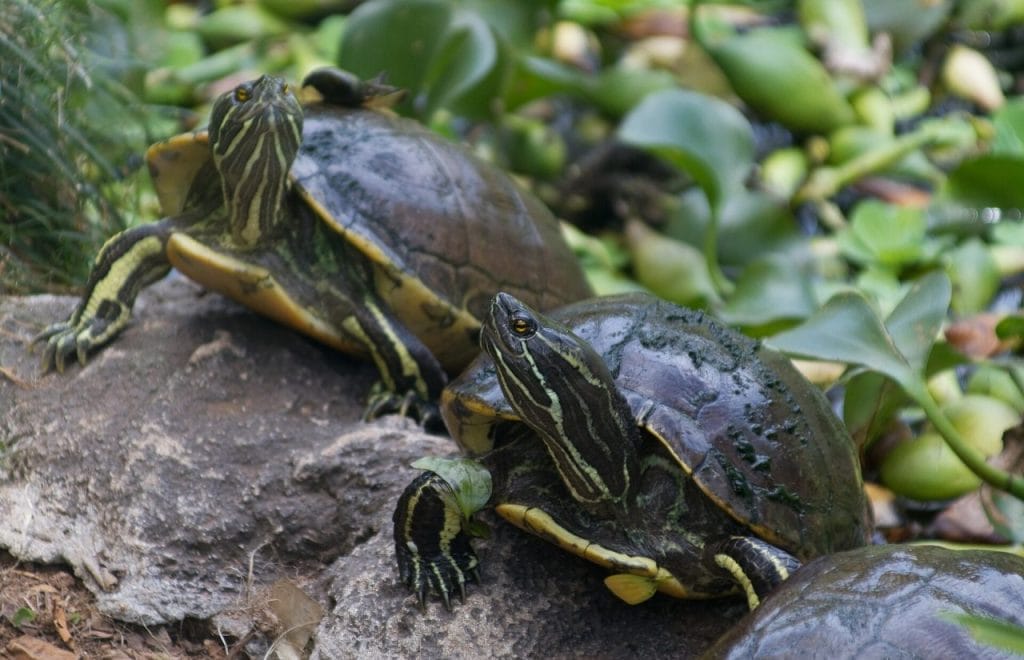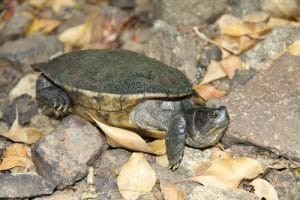Trachemys decorata (Hispaniolan slider)
Home > Turtle Database > Trachemys decorata (Hispaniolan slider)

Trachemys decorata, known as the Hispaniolan slider, is a freshwater turtle found only on the island of Hispaniola, shared by Haiti and the Dominican Republic. It’s part of the pond slider group and is adapted to the tropical climate of the Caribbean.
Native To These Regions
HispaniolaNative Turtle Species Map – Find Turtles by Region
Scientific Classification
Kingdom: Animalia
Phylum: Chordata
Class: Reptilia
Order: Testudines
Family: Emydidae
Genus: Trachemys
Species: Trachemys decorata
Common Names
Hispaniolan slider
Tortuga jicotea (local Spanish name)
This Hilarious Turtle Book Might Know Your Pet Better Than You Do
Let’s be real—most turtle care guides feel like reading a textbook written by a sleep-deprived zookeeper.
This one’s not that.
Told from the snarky point of view of a grumpy, judgmental turtle, 21 Turtle Truths You’ll Never Read in a Care Guide is packed with sarcasm, sass, and surprisingly useful insights.
And hey—you don’t have to commit to the whole thing just yet.
Grab 2 free truths from the ebook and get a taste of what your turtle really thinks about your setup, your food choices, and that weird plastic palm tree.
It’s funny, it’s honest, and if you’ve ever owned a turtle who glares at you like you’re the problem—you’ll feel seen.
Identification
Description
The Hispaniolan slider has a dark olive to brown carapace with lighter yellow or orange markings, which fade with age. The plastron is usually yellow with dark blotches. The skin is olive with fine yellow stripes.
Sexual Dimorphism
Males are smaller, have longer tails, and longer front claws used during courtship. Females grow larger and have shorter, thicker tails.
Check more turtles from the Trachemys genus
Native Origin and Distribution
Geographical Range
Endemic to the island of Hispaniola, which includes both Haiti and the Dominican Republic. Found in freshwater bodies throughout the island.
Preferred Habitat
This turtle lives in slow-moving freshwater like rivers, lakes, ponds, and swamps. It prefers warm, vegetated waters with basking spots like logs or rocks.
Behavior
Feeding Habits
Omnivorous. It eats aquatic plants, insects, crustaceans, and small fish. Juveniles lean more toward meat, while adults eat more plants.
Predators
Predators include birds like herons, raccoons, and humans. Eggs and hatchlings are especially vulnerable.
Reproduction
Breeding Season
Usually starts during the warmer months, from spring to early summer.
Reproductive Method
Females lay eggs on land in sandy or soft soil. A single clutch can have 5 to 20 eggs, depending on the size of the female.
Conservation
Extinction Status
Not currently listed as vulnerable, but considered at risk in some areas due to habitat loss and human impact.
Threats
Habitat destruction, pollution, water drainage, and the pet trade. Some are also hunted for food.
Conservation Measures
Local protections exist in parts of the Dominican Republic. Education programs and habitat preservation are key steps being pushed forward.
Economic Importance
Not widely traded internationally, but sometimes caught for local pet trade or food. Plays a role in controlling insect and plant populations in water bodies.
Interesting Facts
Trachemys decorata is one of the few turtle species restricted to a Caribbean island. It’s closely related to the red-eared slider but has unique patterns and behaviors suited to the tropical environment.

About Author
Muntaseer Rahman started keeping pet turtles back in 2013. He also owns the largest Turtle & Tortoise Facebook community in Bangladesh. These days he is mostly active on Facebook.














